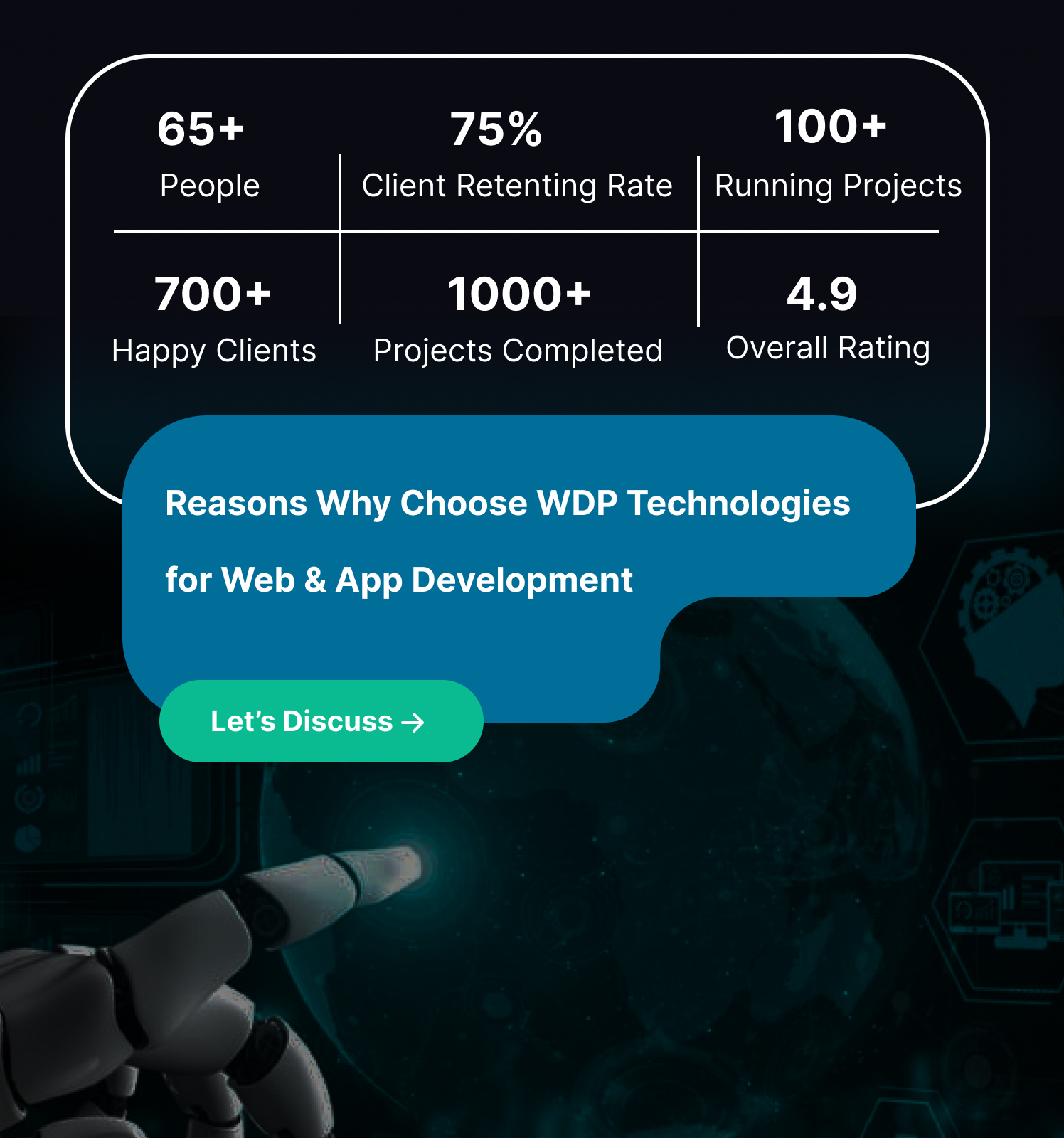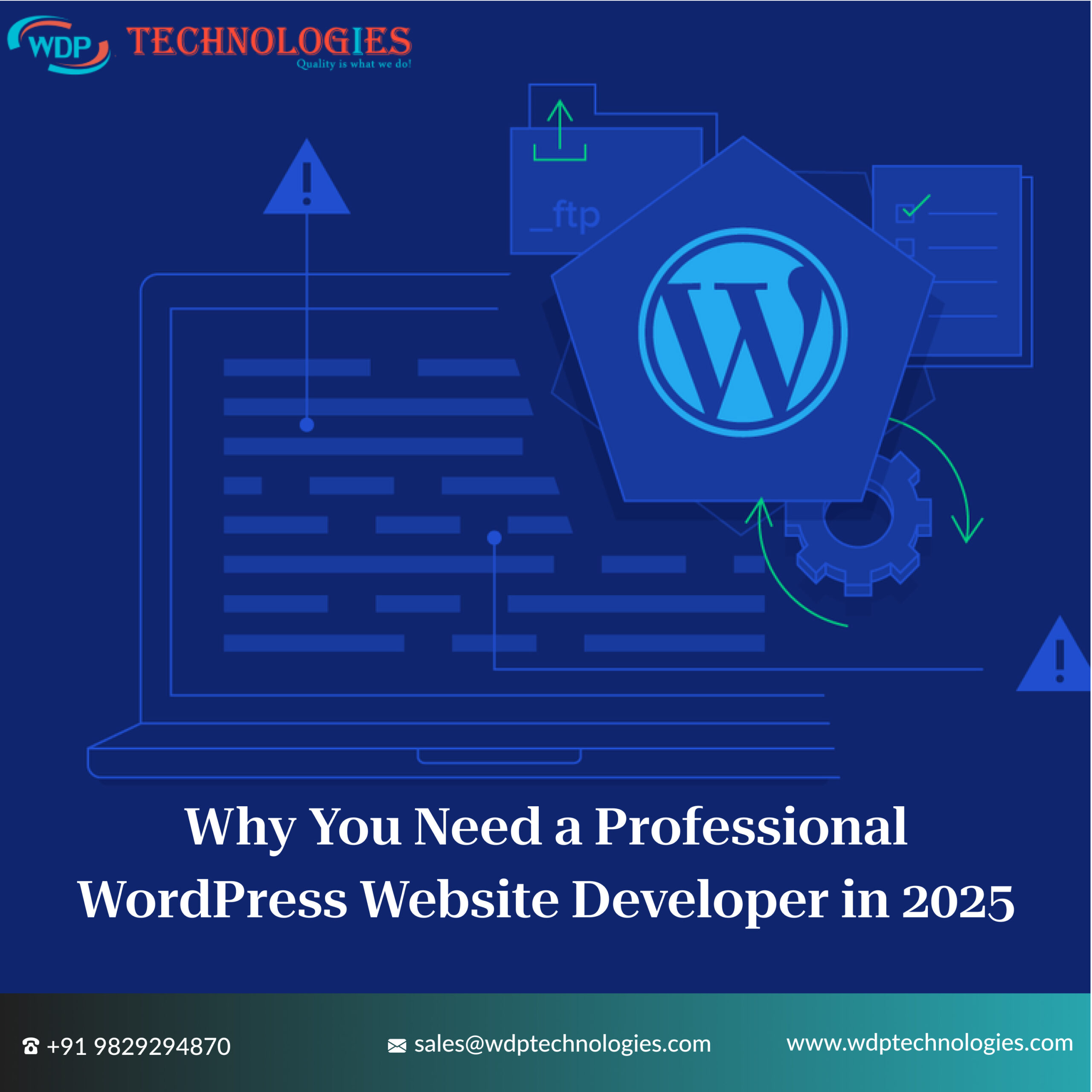Many times a frontend developer needs to use multiple sets of different languages to build their frontend web applications. HTML provides all the basic layouts in a webpage, CSS handles the visual formatting and structure, and JavaScript offers the maintenance of interactivity and functionality. In this article, we are going to discuss the best frontend frameworks that provide the way for frontend web developers while writing the code for their frontend applications.
FrontEnd Frameworks for Your Website
Front end frameworks are collections of pre-written JavaScript, HTML, and CSS code that developers can use to build web applications. They provide a structure for organizing the code and a set of components and tools for building common features such as navigation, forms, and models. Frontend frameworks provide web developers opportunities by offering them reusable code modules, standardized frontend technologies, and ready-made interface blocks that are easy for the development of applications and user interfaces without the need to code every function or object from scratch.
These frontend frameworks have various development tools or functionalities that include a grid that simplifies placing and positioning the user interface design components, predefined font settings, and website standard building stocks like website panels, buttons, navigation bars, etc.
There are so many frontend frameworks available in the market. Front-end developers always try to get the best frameworks of their choice, which is why you need to understand their features to choose your desires for the development of your web applications. For this reason, there is a detailed discussion of the most efficient, prominent, and easy-to-use frontend frameworks in 2023 below.
Frontend Frameworks vs Backend Frameworks
Frontend frameworks and backend frameworks are both types of web development frameworks, but they are used for different purposes and operate on different parts of the web application.
Frontend frameworks, also known as JavaScript frameworks, are used to build the client-side of a web application, which is what the user interacts with. They provide a set of pre-written code and tools for building common features such as navigation, forms, and modals. They are typically written in JavaScript and run in the user’s web browser. Examples of frontend frameworks include React, Angular, and Vue.js.
Backend frameworks, on the other hand, are used to build the server-side of a web application, which handles the application logic and communicates with databases. They provide a set of pre-written code and tools for building common functionality such as handling database interactions, user authentication, and processing HTTP requests. They are typically written in a server-side language such as Python, Java, or Ruby, and run on a web server. Examples of backend frameworks include Express (for Node.js), Ruby on Rails, and Django (for Python).
Both frontend and back-end frameworks are essential to building a complete web application. The frontend framework handles the user interface and the client-side logic, while the backend framework handles the server-side logic and the database interactions.
The Best frontend frameworks in 2023
With all the updates in the market, there are so many frontend frameworks which have been designed for the highest efficiency developers can get. All frameworks have their own unique features, making it tough for developers to pick one. As every business has different requirements and goals, the development of its website and application should be managed with respect to their requirements and goals too.
The popularity and usage of frontend frameworks can change over time, and what is considered the “best” framework will depend on the specific requirements and goals of a project.The most popular frontend frameworks are React, Vue, Angular, Svelte, JQuery, Ember, Backbone, Semantic UI, Foundation, and Preact. Let us discuss in detail about these best frontend frameworks.
1. React
React is one of the best frontend frameworks in the market. React is a JavaScript library for building user interfaces. It was initially released in 2013 by Facebook and has since become one of the most popular and widely used frontend frameworks. React uses a virtual DOM, which improves performance by limiting the number of changes that need to be made to the actual DOM.
Allows React developers to build reusable UI components, which can be easily composed to create complex user interfaces. It also uses a declarative approach, which makes the code more predictable and easier to debug. React also supports server-side rendering, which can improve the performance of web applications, especially on slower devices or low-bandwidth connections.
React has a large and active community, and there are many third-party libraries and tools available that can be used in conjunction with React to build more advanced features and functionality. This makes it a great choice for building large and complex web applications.
React is also used by many popular websites, such as Facebook, Instagram, Netflix, and Airbnb.
It’s worth noting that React is just a view library and doesn’t provide a lot of functionality out of the box, so it’s often used in conjunction with other libraries such as Redux for state management, React Router for routing, and axios for making HTTP requests.
Advantages
- Fast updates
- Supported by Facebook
- Virtual DOM for fast operation in the document
- Compatible with many JS libraries
- Writing components without classes
- Code components can be reused
- Beginners-friendly
- Easy to migrate between different versions
Limitations
- Complicated to learn JSX syntax
- Lack of well-elaborated documentation
2. Vue.js
Vue.js is another well known frontend framework. Vue.js is a JavaScript framework for building user interfaces. It was first released in 2014 by Evan You and has since become one of the most popular and widely used frontend frameworks.
Vue.js is a progressive framework, meaning that it can be used for building small to medium-sized projects, and can also be easily integrated into larger projects. Vue.js is also known for its simplicity and ease of use. It has a small learning curve and its API is easy to understand, making it accessible to developers of all levels.
One of the key features of Vue.js is its template-based syntax, which allows Vue.js developers to declaratively render the view. Vue.js also has a built-in reactivity system, which makes it easy to manage the state of the application and update the view when the state changes.
Vue.js also has a large and active community, and there are many third-party libraries and tools available that can be used in conjunction with Vue.js to build more advanced features and functionality.
Vue.js is also used by many popular websites, such as Alibaba, Xiaomi, and Behance.
Like React, Vue.js is just a view library and doesn’t provide a lot of functionality out of the box, so it’s often used in conjunction with other libraries such as Vuex for state management and Vue Router for routing.
Advantages
- Fast and small-sized
- Comprehensive documentation
- Beginner-friendly
- Two-way data binding
- Easy syntax
- Positive effects on SEO
Limitations
- Lack of plugins
- New and developed by private individuals
- Limited applications in big projects
- Not supported by a powerful business
3. Angular
Angular is the best frontend framework based on javascript for building web applications. It was initially released in 2010 by Google and has since become one of the most popular and widely used frontend frameworks. Angular is a comprehensive framework that provides a wide range of features and tools for building complex web applications.
One of the key features of Angular development is its use of components, which are self-contained units of an application that handle a specific piece of functionality. Angular also uses a declarative approach, which makes the code more predictable and easier to debug. Additionally, Angular has a built-in dependency injection system, which makes it easy to manage the state of the application and update the view when the state changes.
Angular also has a large and active community, and there are many third-party libraries and tools available that can be used in conjunction with Angular to build more advanced features and functionality.
Angular is also used by many popular websites, such as Upwork, PayPal, and IBM.
Angular is different from React and Vue.js as it provides a complete solution for building web applications, including features such as routing, state management, and a powerful template system. This makes it a great choice for building large and complex web applications.
Advantages
- Two-way data binding
- Component-based architecture
- Testable, reusable, manageable applications
- Directives feature
- Dependency injection feature
- Supported by Google
- Strong community
- Good training materials
- Enhanced server performance
Limitations
- Tough to learn for beginners
- Limited SEO capabilities
- Bloated code and large in size
4. Svelte
Svelte is a frontend framework based on javascript for building user interfaces. It differs from other frameworks and libraries, such as React and Angular, in that it does not use a virtual DOM, which can improve performance. Instead, Svelte compiles components at build time, generating efficient code that updates the real DOM directly. Additionally, Svelte has a relatively small footprint, making it well-suited for smaller projects or as a light-weight alternative to larger frameworks.
Svelte was initially launched in 2016 and had been rapidly getting more popular since then. It is neither a framework nor a library; you can say that Svelte is a compiler. It is now known as one of the best frontend frameworks in 2023. Almost 10 to 15 percent of front-end developers are satisfied with Svelte.
Nowadays, around 3,000 websites and applications have been built with this framework, including The New York Times, 1Password, Philips BlueHive, Chess, Absolute Web, Godday, Cashfree, Rakuten, HealthTree, Razorpay, and many more.
Svelte is an open-source, component-based, TypeScript-written JavaScript frontend framework that is not only a lightweight development option but is also considered one of the fastest frontend frameworks on the market. It enables developers to finalize their web development projects with much less coding compared to other frontend frameworks.
Advantages
- One of the quickest frontend frameworks with fast reactivity
- Minimal coding
- Component-based architecture
- Lightweight and simple
- Able to run current JS libraries
- SEO-optimized
- No need for a virtual DOM
Limitations
- Limited ecosystem and tooling
- Immature community
- Lack of supportive materials
- Doubtful scalability and coding nuances
5. JQuery
Another best frontend framework for development is JQuery. It is a JavaScript library that makes it easier to work with HTML documents, handle events, create animations, and develop AJAX applications. It was first released in 2006 and is one of the most popular JavaScript libraries in use today.
jQuery simplifies a lot of common tasks that are difficult to implement with plain JavaScript, such as traversing and manipulating the DOM, handling events, and making AJAX requests. It also has a large community and many plugins available that can be easily integrated into a project to add additional functionality.
jQuery uses a chaining syntax, which allows you to perform multiple actions on a single element, reducing the amount of code required to perform these actions and making it more readable.
jQuery is browser compatible and it is widely supported.
Advantages
- Beginner-friendly
- Comfortable to work
- Replete with plugins
- Compatible with popular browsers
- Powerful community
- Multiple tools for DOM manipulations
- SEO-optimized
Limitations
- Huge in size
- Slightly low-speed applications
- Gradually losing the battle to more functional browsers
- Misses a data layer
6. Ember
Ember.js is also one of the best frontend framework. It is a JavaScript framework for building web applications. It is based on the model-view-controller (MVC) pattern and emphasizes convention over configuration, meaning that it follows a set of conventions for structuring and naming files, which can make it easier to understand and maintain large Ember applications.
Ember provides a powerful set of features for building ambitious web applications such as routing, data management, and an Ember CLI for building, testing, and deploying Ember applications. Ember also follows a strict file structure, which makes it easy to find specific files and understand how different parts of the application are organized. Ember also uses a two-way data binding system which allows for real-time updates to the user interface.
Ember is often used to build large and complex web applications, and it has a strong focus on developer productivity and maintainability. Ember also has a large and active community, which provides a lot of support and resources for learning and developing with the framework.
Advantages
- Server-side rendering
- Testing and debugging tools
- Consistent documentation
- Widget-based approach to components
- URL-focused approach
- Two-way data binding
- Motivated community
- Supporting JavaScript and TypeScript
Limitations
- Not very much beginner-friendly
- Not ideal for small projects
- Heavy size
- Lacking component reusing capabilities
- Little or no customization
7. Backbone
Backbone.js is a JavaScript library that provides a structure for building web applications. It is based on the model-view-controller (MVC) pattern and emphasizes separation of concerns, which can make it easier to manage the complexity of large web applications.
Backbone provides basic building blocks such as Models, Views, and Collections, which can be used to represent the data and logic of a web application. It also provides a router for handling client-side routing, which allows for creating single-page applications.
Backbone is lightweight and flexible, making it easy to integrate with other libraries and frameworks, it is also known for being easy to learn and understand. Backbone’s small size and simplicity make it well-suited for small to medium-sized projects and as a starting point for building more complex web applications.
Backbone is often used as a lightweight alternative to other JavaScript frameworks such as AngularJS, EmberJS, and ReactJS. It has a relatively small but dedicated community and many resources available for learning and developing with the library.
Advantages
- Over 100 extensions
- Easy to learn for beginners
- Small size
- Fewer requests to HTTP
- Well-organized tutorials
- Storing data in models instead of in DOM
Limitations
- No two-way data binding
- Unclear architecture on some occasions
- Gradually becoming obsolete
- The need for more code to write
8. Semantic UI
Semantic UI is a frontend development framework that provides a set of pre-built user interface (UI) elements and components, such as buttons, forms, and modals, that can be used to quickly and easily create visually appealing, responsive websites and web applications.
Semantic UI is built on top of the popular jQuery library and uses a set of custom CSS classes to style the UI elements. The framework also includes a set of built-in JavaScript plugins that can be used to add interactivity to the UI elements, such as modals and dropdown menus.
Semantic UI follows a “Semantic” approach, meaning it focuses on providing a set of intuitive and meaningful class names that describe the functionality of the UI elements, making the HTML code more readable and understandable.
The framework is highly customizable, it uses LESS as a pre-processor and it has a large number of variables that can be easily overridden to change the look and feel of the UI elements.
Semantic UI is also known for its responsive design, it is easy to use and it has a large number of pre-built UI components that can be easily integrated into a project to add additional functionality. The framework also has a large and active community that provides a lot of support and resources for learning and developing with the framework.
Advantages
- Rich and responsive UI components
- Self-explanatory organic code
- Offering a big choice of themes
- Seamless integration with Angular, React, Meteor, and Ember
Limitations
- Small community
- Not easy to learn for beginners
- Few recent updates
- Needs proficiency in developing custom configurations
9. Bootstrap
Bootstrap is a popular frontend development framework for building responsive websites and web applications. It was developed and is maintained by Twitter and was first released in 2011.
Bootstrap provides a set of pre-built CSS and JavaScript components that can be used to quickly and easily create visually appealing, responsive websites and web applications. It includes a grid system for creating responsive layouts, a wide variety of pre-built UI components such as forms, buttons, and navigation elements, and a set of CSS classes for styling text, forms, and other elements.
Bootstrap also includes a set of JavaScript plugins that can be used to add interactivity to the UI elements, such as modals, carousels and tooltips. It also has support for CSS pre-processors like LESS and Sass and it is highly customizable.
Bootstrap has become one of the most popular frontend development frameworks and it is widely used by web developers because of its simplicity, flexibility, and responsive design. It also has a large and active community that provides a lot of support and resources for learning and developing with the framework.
Advantages
- Responsive
- Consistency
- pre-built
- large and active community
Limitations
- Limited customization
- Larger file size
- Overuse
- Limited accessibility
- Limited support for older browsers
10. Foundation
Foundation is a responsive frontend framework that includes a set of CSS and JavaScript components for building responsive websites and web applications. It was first released in 2011 and is developed and maintained by ZURB, a design and development company.
Foundation provides a grid system for creating responsive layouts, a wide variety of pre-built UI components such as forms, buttons, and navigation elements, and a set of CSS classes for styling text, forms, and other elements. It also includes a set of JavaScript plugins that can be used to add interactivity to the UI elements, such as modals, carousels, and tooltips.
Foundation is built with Sass, which provides a lot of flexibility and power when customizing the framework. It also has a variety of additional features such as accessibility, and support for older browsers. Foundation also has a set of templates and pre-built pages that can save time when starting a new project
Foundation is highly customizable, it is also known for its responsive design, and it has a large number of pre-built UI components that can be easily integrated into a project to add additional functionality. The framework also has a large and active community that provides a lot of support and resources for learning and developing with the framework.
Advantages
- Responsive design
- Customizable
- Accessibility
- Support for older browsers
- Large and active community
Limitations
- Limited customization
- Overuse
- Steep learning curve
- Larger file size
- Limited support for CSS pre-processor
Read More: App Development Frameworks
Conclusion
It is not very easy to select one from the frontend frameworks discussed in the above article which have different advantages and limitations. There are several frontend development frameworks that are popular among web developers and can be used to build responsive and visually appealing websites and web applications. Each framework has its own set of pros and cons, and the best choice for a particular project will depend on the specific requirements and goals of the project.
The most popular frontend frameworks for websites in 2023 are: React, Angular, Vue.js, Svelte, Ember, Backbone, Semantic UI, Bootstrap, Foundation, and Bulma. These frameworks are widely used and have large and active communities that provide support and resources for learning and developing with the frameworks.













